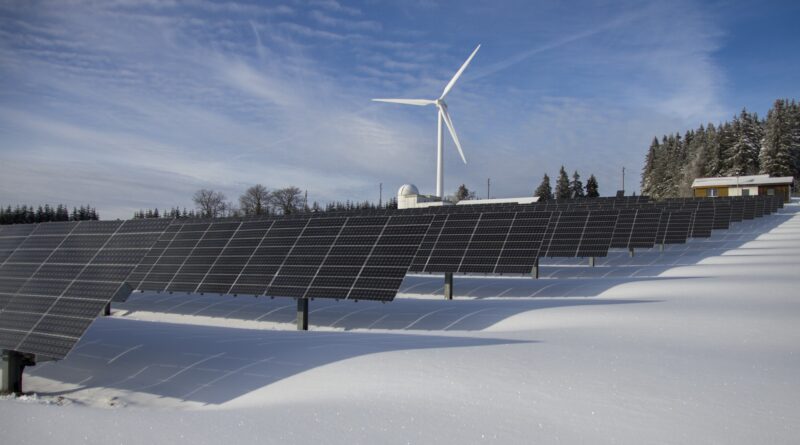7 Alternative Energy Sources That Can Make a Difference
A lot of discussions have been ongoing about Alternative Energy lately, especially since the devastating effects of climate change. To begin with, what is Alternative Energy?
Understanding Alternative Energy
To simply put, Alternative Energy is a source of energy other than fossil fuels (that is, coal, diesel, and petroleum). These include renewable and nuclear energy sources.
Alternative Energy is referred to as renewable energy because its sources are found in nature and are part of the planet’s physical nature such as in the air, in the oceans, deep underground, and in sunlight. These sources are constantly being renewed through natural means and cannot run out.
However, nuclear energy is not listed as renewable energy because nuclear materials are finite in existence and can’t be replenished within a human’s lifetime. Nuclear energy can be produced from elements such as thorium and uranium.
Although Alternative Energy is referred to as renewable, this does not mean they are 100 percent environmentally friendly or safe. For example, dams in the process of harnessing the power of moving water to generate electricity can cause severe harm to the fishes and aquatic life. Also, there are environmental impacts that occur from the manufacturing process of wind turbines using the sun’s energy to generate electricity.
However, the negative environmental impact of alternative energy is far lighter than those caused by fossil fuels. This is what has made alternative energy sources more important than coal and fossil fuels. They serve as the answer to the severe negative impact of climate change and the means of achieving a less polluted world.
What Are theAdvantages of Using Alternative Energy to Generate Electricity?
Alternative Energy sources have proven to be more economical in generating electricity than coal and fossil fuels. For example, wind power and solar power systems are now cheaper than coal and fossil fuels all over the world, and their price continuously keeps dropping
Alternative Energy sources do not run out as they are natural resources. This offers the best option for fossils fuels which are fast damaging our planet.
They are environmentally friendly and help to minimize pollution and as such improve our basic health.
The use of alternative energy also requires less damaging and expensive extraction techniques.
What Are the Top Sources for Alternative Energy?
There are various sources of alternative energy such as water, the sun, and wind. Each works in unique ways.
Here are the 7 top sources for Alternative Energy
1. Solar Energy
Solar energy tops the list of alternative sources of energy. This simply involves the capturing of radiant energy and converting it to electricity, hot water, or heat. There are two technologies for generating solar energy – photovoltaic panels and thermal panels. The photovoltaic technology converts sunlight directly to electricity with the use of solar cells. While the thermal technology heats air or water for use in the home.
The use of solar energy is boosted by the ever-present sunlight which is its primary source for generating energy. In the long run, it will likely render fossil fuels obsolete and knock them out of reckoning. Switching to solar energy will in the short term help to cut costs on energy bills. While in the long run, it may help to completely eliminate energy costs. Unlike fossil fuels, solar energy has little or no negative impact on the environment and causes very minimal pollution. It also helps to improve environmental conditions and public health.
The downside to it is the huge investment it requires and the several factors that have to be considered before adopting a solar power system for energy production.
2. Wind Energy
This is the second most used alternative source of energy after, and also a form of, solar energy. This involves building a wind farm that houses wind turbines. The wind turbines capture the energy of wind flow and convert it into electricity. There are different forms of the system used in capturing and converting wind energy and each varies in function. The single wind turbines are used as supplements for existing energy organizations. While the commercial-grade wind power generating system has the capacity to power several organizations.
3. Hydroelectric Energy
This is the most widely used means of alternative energy. It requires the construction of a dam that harnesses the power of water as it flows through it to turn the generators to produce electricity. It is environmentally friendly, produces no toxic gas, and does not cause pollution. Its versatility makes it suitable for both large-scale and small-scale projects. However, it consumes more energy than it generates for consumption.
4. Geothermal Energy
Geothermal energy generates electricity from heat trapped beneath the earth’s crust. This heat has been beneath the earth since its existence and forms radioactive decay.
Geothermal energy is not common like others but its potential for energy supply is high.
5. Ocean Energy
Ocean energy is of two types – mechanical and thermal. The mechanical energy of the ocean is harnessed through the ebbs and flows of the tides created by the gravity of the moon and the earth’s rotation to generate energy. As for the thermal energy of the ocean, it relies on the surface temperatures of warm water to be able to generate energy through a variety of several systems.
6. Hydrogen Gas
Hydrogen naturally occurs with oxygen to form water and cannot exist on its own. To use hydrogen to generate electricity it needs to be separated from oxygen and other elements it occurs with and put in its true state. Once this is successfully done, hydrogen can tremendously generate electricity and be used to power vehicles, industries, homes, rockets, and ships. Its use is environmentally friendly.
7. Bioenergy
Bioenergy is generated from biomass. Biomass is organic matter produced by organisms and plants. Biomass energy is generated through various means such as burning biomass (like burning woods or waste) and harnessing the heat generated to produce energy or through harnessing the methane gas that is formed from the natural decomposition of organic matter. Already, biomass energy accounts for 5% of total energy in the United States.
Last Line
So if you are thinking of an alternative to fossil fuel, you can look to any of the seven listed sources above. However, only a couple of them can be done individually, they largely need commercial production.

